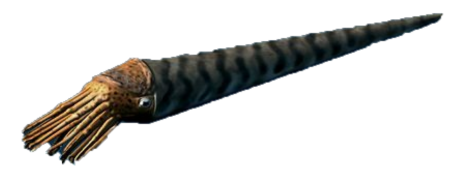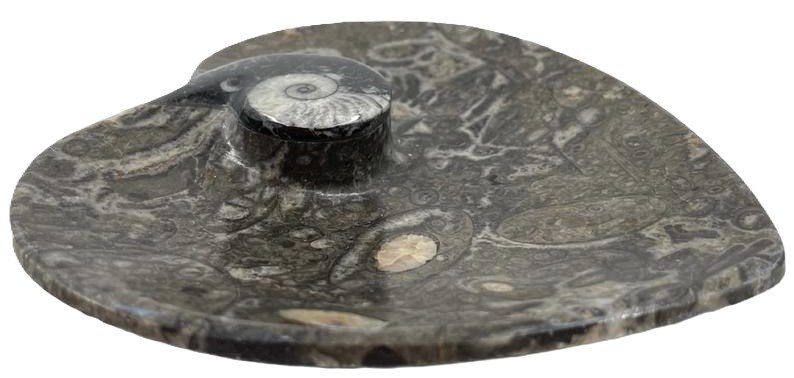
The name Orthoceras originates from the Greek words ortho, meaning “straight”, and keras, meaning “horn”, referring to the elongated, conical shape of its shell. First described in the 18th century, these extinct marine creatures belonged to the class Cephalopoda, making them distant relatives of modern squids, octopuses, and nautiluses.
Locations and Distribution
Orthoceras fossils have been found worldwide, primarily in limestone deposits that date back to the Ordovician period, approximately 470 million years ago. Major fossil discoveries have occurred in Morocco, Sweden, the United States, Canada, and Estonia, often within ancient seabed formations. Their wide distribution suggests that Orthoceras thrived in warm, shallow seas, forming part of a diverse and ancient marine ecosystem.
Physical Characteristics
Orthoceras were primitive cephalopods, distinguished by their long, straight, and chambered shells. These chambers, connected by a central tube called a siphuncle, allowed them to control buoyancy, similar to modern nautiluses. Their soft bodies extended from the shell’s opening, with multiple tentacles used for grasping prey. Fossilised remains suggest they had simple eyes and a beak-like mouth for crushing small marine organisms such as trilobites and crustaceans.

Archaeological Finds and Discoveries
Morocco is one of the richest sources of Orthoceras fossils, where beautifully preserved specimens are often embedded in black limestone. These fossils are commonly used in jewellery, sculptures, and decorative objects due to their striking appearance. Some Orthoceras fossils have been found in mass deposits, indicating that they may have lived in large shoals or perished in events of mass mortality, possibly caused by environmental changes or predation.
Interesting Facts
- Orthoceras were among the earliest cephalopods, predating even the first dinosaurs by hundreds of millions of years.
- The siphuncle structure inside their shells enabled them to regulate buoyancy and move efficiently through prehistoric seas.
- Their fossils are often polished and used in decorative art, particularly in Moroccan fossil markets.
- They are thought to have been opportunistic predators, using their tentacles to capture smaller marine creatures.
- Some fossils display signs of bite marks, likely from larger marine predators such as giant arthropods and early vertebrates.
Folklore, Legends, and Tales
Due to their distinctive appearance, Orthoceras fossils have been the subject of various myths and interpretations. In some cultures, they are seen as symbols of ancient wisdom and resilience, representing the endurance of life through time. In Scandinavian folklore, fossilised cephalopods were sometimes believed to be petrified serpent remains, while in Morocco, they are often sold as talismans for protection and good luck.
Links with Astrology and the Chakra System
Orthoceras fossils are often associated with grounding and stability due to their ancient origins. Within astrology, they are sometimes linked to Capricorn, a sign known for discipline and a deep connection to the Earth’s history. In terms of chakras, Orthoceras is commonly connected to the root chakra (Muladhara), which governs stability, grounding, and a sense of security. Many believe that keeping an Orthoceras fossil nearby can help balance one’s energies and provide a sense of connection to the past.

Orthoceras
Orthoceras collection
